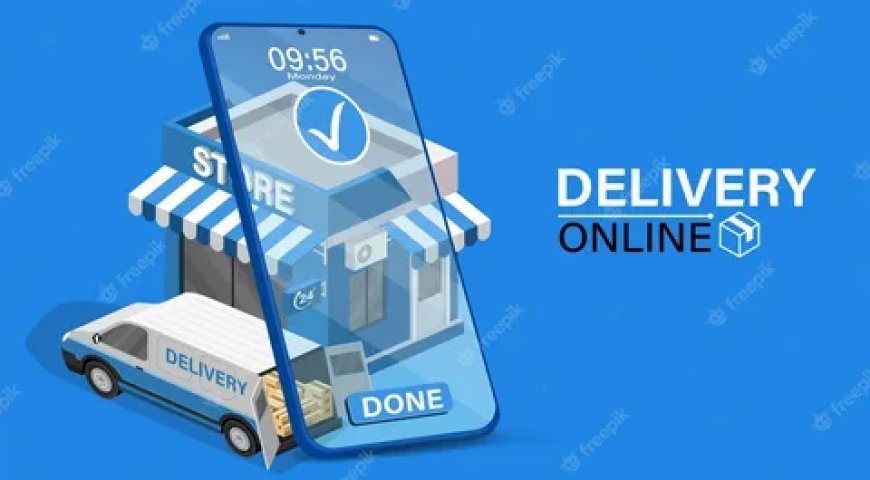Best Practices in Online Parcel Tracking
Implementing best practices in online parcel tracking is essential for businesses to optimize their shipping operations, enhance customer satisfaction

In the rapidly evolving landscape of e-commerce and logistics, online parcel tracking has become an essential tool for businesses to manage their shipping operations effectively and meet the expectations of customers. Implementing best practices in online parcel tracking is crucial for ensuring efficiency, accuracy, and customer satisfaction throughout the shipping process. In this article, we will explore some of the key best practices in online parcel tracking and how businesses can leverage them to optimize their shipping operations.
Utilize Reliable Tracking Technology
One of the fundamental best practices in online parcel tracking(www.trackingsols.com) is to utilize reliable tracking technology. This includes implementing barcode, QR code, or RFID tagging systems to assign unique identifiers to each parcel. These identifiers are scanned at various checkpoints along the shipping route, allowing businesses to track the movement of parcels in real-time. Investing in reliable tracking technology ensures accurate and consistent tracking data, enabling businesses to provide customers with reliable updates on the status of their shipments.
Offer Multiple Tracking Channels
To cater to the diverse preferences of customers, businesses should offer multiple tracking channels for accessing parcel tracking information. This may include online tracking portals, mobile applications, SMS notifications, and email updates. By providing customers with multiple channels for tracking their parcels, businesses can accommodate different communication preferences and ensure that customers have easy access to tracking information wherever they are.
Provide Detailed Tracking Information
Transparency is key to building trust and confidence in the shipping process. Businesses should provide customers with detailed tracking information, including the current location of their parcel, estimated delivery time, and any relevant updates or exceptions. Additionally, businesses should provide clear and concise explanations of tracking statuses and codes to help customers understand the progress of their shipments accurately.
Ensure Data Accuracy and Timeliness
Data accuracy and timeliness are critical factors in online parcel tracking. Businesses should ensure that tracking data is updated accurately and in a timely manner to provide customers with the most up-to-date information about their shipments. This requires regular monitoring of tracking systems, prompt resolution of data discrepancies or errors, and proactive communication with customers in the event of delays or issues.
Implement Real-Time Tracking and Notifications
Real-time tracking and notifications are essential features of modern online parcel tracking systems. Businesses should implement real-time tracking technology to provide customers with continuous updates on the status and location of their parcels. Additionally, businesses should offer proactive notifications to alert customers to important events or changes in the shipping process, such as when a parcel is out for delivery, delayed, or delivered successfully.
Optimize Tracking User Experience
The user experience of online parcel tracking systems plays a significant role in customer satisfaction. Businesses should focus on optimizing the tracking user experience by designing intuitive and user-friendly tracking interfaces. This includes providing easy-to-navigate tracking portals, clear and concise tracking status updates, and seamless integration with other customer touchpoints, such as e-commerce platforms and customer service channels.
Empower Customers with Self-Service Options
Empowering customers with self-service options for tracking their parcels can help streamline the shipping process and reduce the burden on customer support teams. Businesses should provide customers with self-service tracking tools that allow them to track their parcels independently, manage delivery preferences, and resolve common issues or inquiries without the need for direct assistance from customer support.
Integrate Tracking with Customer Communication Channels
Integration of parcel tracking with customer communication channels is essential for providing a seamless and cohesive customer experience. Businesses should integrate parcel tracking information with other customer communication channels, such as order confirmation emails, shipping notifications, and customer support interactions. This ensures that customers have easy access to tracking information at every touchpoint of their interaction with the business.
Monitor Performance Metrics and KPIs
Monitoring performance metrics and key performance indicators (KPIs) is essential for evaluating the effectiveness of online parcel tracking systems and identifying areas for improvement. Businesses should track metrics such as on-time delivery rates, tracking accuracy, customer satisfaction scores, and resolution times for tracking-related inquiries. By monitoring these metrics, businesses can identify trends, track progress, and make data-driven decisions to optimize their parcel tracking operations.
Continuously Improve and Innovate
The logistics industry is constantly evolving, driven by advancements in technology, changes in consumer behavior, and shifts in market dynamics. Businesses should continuously strive to improve and innovate their online parcel tracking systems to stay ahead of the curve. This may involve adopting new tracking technologies, implementing advanced analytics and predictive modeling, and exploring emerging trends such as blockchain-based tracking solutions.
Conclusion
In conclusion, implementing best practices in online parcel tracking is essential for businesses to optimize their shipping operations, enhance customer satisfaction, and maintain a competitive edge in the market. By utilizing reliable tracking technology, offering multiple tracking channels, providing detailed tracking information, ensuring data accuracy and timeliness, implementing real-time tracking and notifications, optimizing the tracking user experience, empowering customers with self-service options, integrating tracking with customer communication channels, monitoring performance metrics and KPIs, and continuously improving and innovating, businesses can create a seamless and transparent shipping experience that meets the expectations of customers in today's digital age.







